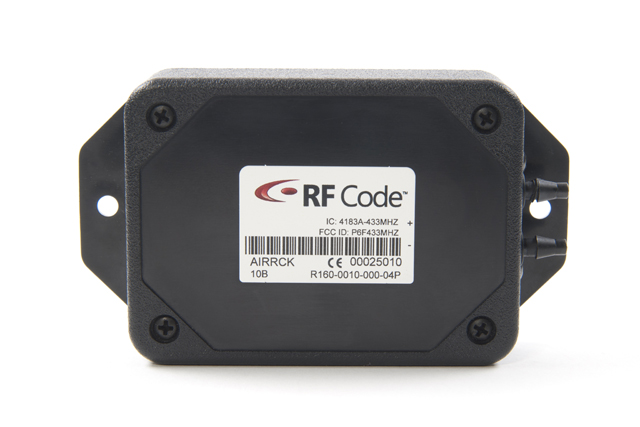
The R160 sensor is housed in an impact-resistant, flame-retardant ABS plastic enclosure that can be mounted with strong adhesive on the back of the case, or via hardware/screws or zip-ties through the mounting holes. The unit ships with 8 feet of flexible tubing to achieve physical separation between the +/- sensor terminals. The tag is designed for years of reliable performance with a battery life that exceeds 5 years in most deployment environments. The tag is powered by three (3) CR2032 replaceable batteries with a very low duty cycle and a 10-second beacon rate. The R160’s form factor ensures clear signal transmission in high-density deployments. Featuring a low-battery alert, the tag will continue to report pressure data for at least three months following the initial alert. After that, the tag will broadcast its unique ID and a low battery indication with each beacon, but will not report pressure data until the batteries are replaced.
Features:
- Wire-free Sensor Tag Provides Wireless Differential Pressure Data
- Ideal for Optimizing Data Center Air Flow and Cooling Systems
- Reports Differential Air Pressure Between Two Points
- Fully Compatible with RF Code’s Sensor Manager and Asset Manager Software Solutions
- Easy-to-Deploy, “Wire-free” Monitoring
- Sensor Tag Easily Mounts to Flat Surfaces, Walls or Pipes
- Tubing Can Be Routed Above /Below Floors, along Walls, Plenums or Air Ducts
- Low Power Consumption for Long Battery Life
